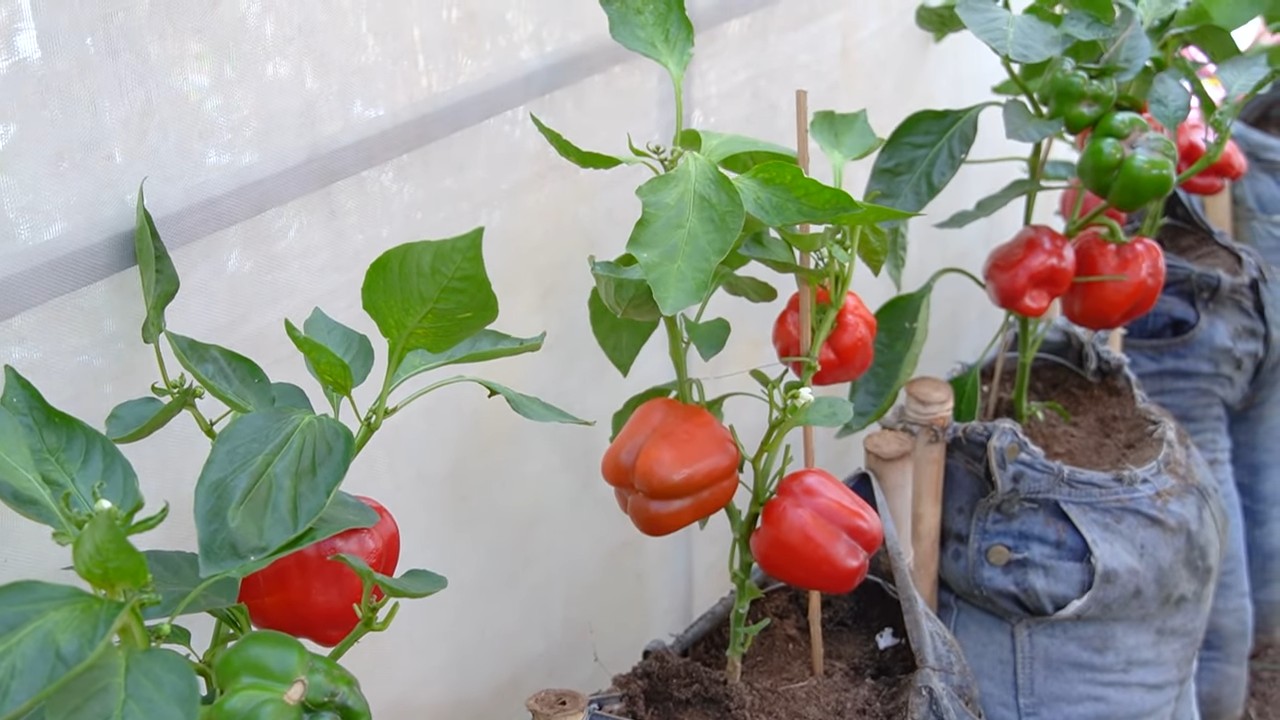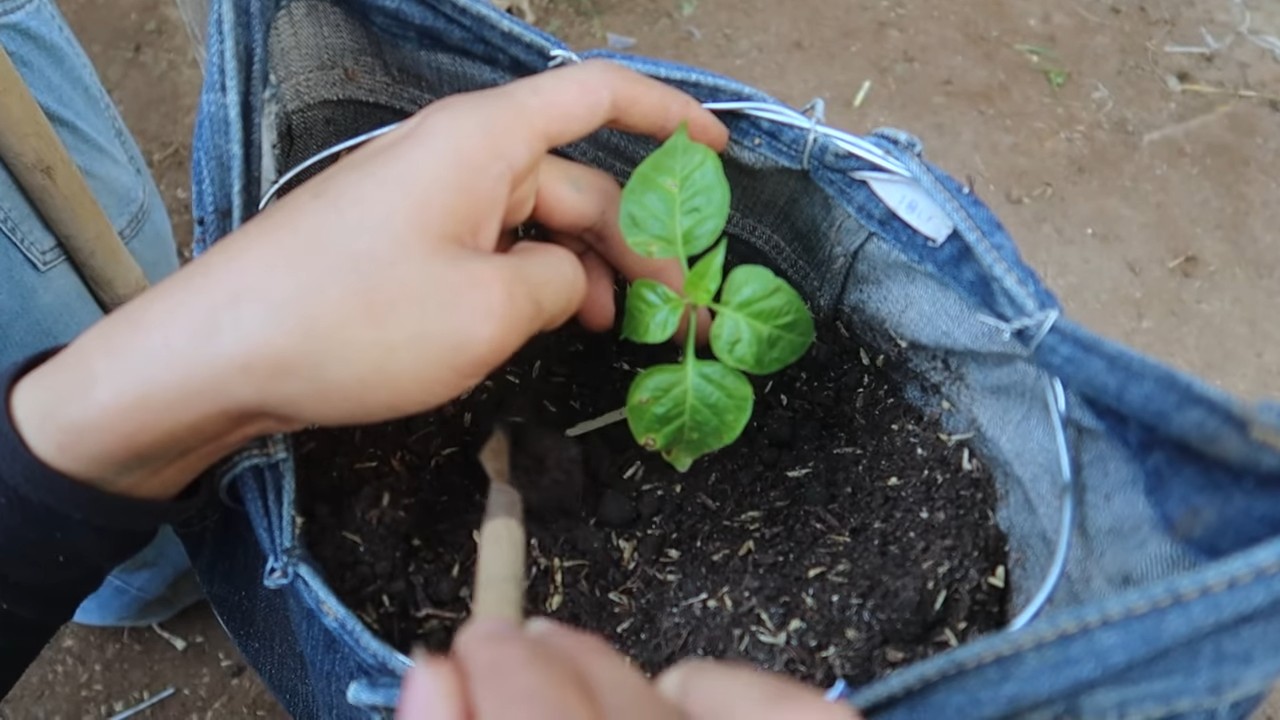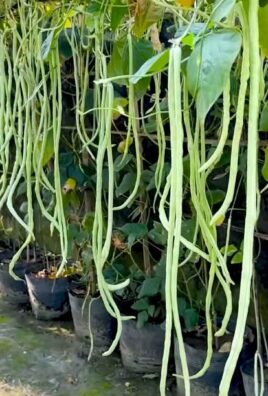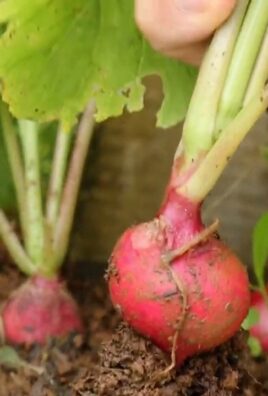DIY pepper plant support is easier than you think, and trust me, your pepper plants will thank you! Are you tired of watching your precious pepper plants droop under the weight of their bountiful harvest? Or perhaps you’re battling against strong winds that threaten to snap those delicate stems? I know I was! For centuries, gardeners have sought clever ways to protect their crops, from simple trellises in ancient Rome to elaborate bamboo structures in Asia. The need to support fruiting plants is as old as agriculture itself.
But why spend a fortune on store-bought supports when you can create your own sturdy and stylish solutions with materials you probably already have lying around? This DIY guide will walk you through several simple yet effective methods for building DIY pepper plant support systems. Not only will you save money, but you’ll also gain a sense of accomplishment and tailor your supports to perfectly fit your garden’s unique needs. Plus, it’s a fantastic way to reduce waste and embrace a more sustainable gardening practice. Let’s get started and give those pepper plants the support they deserve!

DIY Pepper Plant Support: Keeping Your Peppers Upright and Happy!
Hey there, fellow gardeners! Are your pepper plants starting to droop under the weight of their delicious bounty? Don’t worry, I’ve been there! Those peppers can get heavy, and sometimes our plants need a little extra help staying upright. That’s where this super easy and affordable DIY pepper plant support comes in. I’m going to show you how to build a sturdy support system that will keep your plants happy and productive all season long.
Why Support Your Pepper Plants?
Before we dive into the how-to, let’s quickly chat about why supporting your pepper plants is so important.
* Prevents Branch Breakage: This is the big one! Heavy peppers can easily snap branches, especially after a rainstorm.
* Improves Air Circulation: Keeping the plant upright allows for better airflow, which helps prevent fungal diseases.
* Easier Harvesting: No more bending over and struggling to reach peppers hidden on the ground!
* Maximizes Sunlight Exposure: Upright plants get more sunlight, leading to better fruit production.
* Keeps Peppers Clean: Prevents peppers from touching the soil, reducing the risk of rot and pests.
Materials You’ll Need
The best part about this project is that you probably already have most of the materials lying around! Here’s what you’ll need:
* Bamboo Stakes or Wooden Dowels: I prefer bamboo stakes because they’re lightweight and readily available, but wooden dowels work just as well. You’ll need 3-4 stakes per plant, depending on its size and how bushy it is. Aim for stakes that are at least 3-4 feet long.
* Garden Twine or Soft Plant Ties: Avoid using wire, as it can cut into the plant stems. Soft plant ties or garden twine are much gentler.
* Scissors or Pruning Shears: For cutting the twine.
* (Optional) Hammer: If your soil is particularly hard, a hammer can help you drive the stakes into the ground.
Building Your Pepper Plant Support: Step-by-Step
Okay, let’s get building! This is a really straightforward process, and you’ll be amazed at how much of a difference it makes for your plants.
1. Assess Your Plant: Take a good look at your pepper plant. Identify the branches that are drooping or heavily laden with peppers. This will help you determine where to place the stakes.
2. Position the Stakes: This is where the magic happens. You want to create a sort of “cage” around your plant.
* Stake Placement: Insert the stakes into the ground around the perimeter of the plant, about 4-6 inches away from the main stem. The number of stakes you use will depend on the size of your plant. For smaller plants, three stakes might be enough. For larger, bushier plants, you might need four or even five.
* Angle the Stakes: Angle the stakes slightly outwards, away from the center of the plant. This will provide better support and prevent the stakes from rubbing against the stems.
* Depth: Push the stakes firmly into the ground, making sure they’re stable. You want them to be deep enough that they won’t easily topple over, especially in windy conditions. If you’re having trouble pushing them in, use a hammer to gently tap them into the soil. Be careful not to damage the stakes!
3. Tie the Stems to the Stakes: Now it’s time to secure the plant to the stakes.
* Cut the Twine: Cut several lengths of garden twine or soft plant ties, each about 12-18 inches long.
* Gentle Tying: Gently lift the drooping branches and tie them to the stakes. Use a loose knot, like a figure-eight knot, to avoid constricting the stems. You want to support the branch, not strangle it!
* Spacing: Tie the branches at multiple points along the stake, spacing the ties about 6-8 inches apart. This will provide even support and prevent the branches from sagging.
* Avoid Over-Tying: Don’t tie the branches too tightly to the stakes. You want to allow for some natural movement, which will help the plant develop stronger stems.
* Focus on Heavy Branches: Pay special attention to the branches that are heavily laden with peppers. These are the ones that are most likely to break.
4. Repeat as Needed: As your pepper plant grows and produces more peppers, you may need to add more stakes or adjust the ties. Keep an eye on your plant and make adjustments as needed.
Alternative Support Methods
While the bamboo stake method is my go-to, here are a few other options you might want to consider:
* Tomato Cages: These work well for smaller pepper plants, but they can be too flimsy for larger varieties.
* Wire Cages: You can build your own wire cages using hardware cloth. This is a more durable option than tomato cages.
* Trellises: Trellises are a great option for vining pepper varieties.
* Hanging Baskets: For smaller pepper varieties, you can grow them in hanging baskets and let the peppers dangle down.
Tips for Success
* Start Early: It’s best to install the supports when the plants are young, before they start to get too heavy.
* Use Soft Ties: Avoid using wire or anything that could cut into the plant stems.
* Check Regularly: Inspect your plants regularly and adjust the supports as needed.
* Water Properly: Proper watering is essential for healthy pepper plants.
* Fertilize Regularly: Fertilize your plants regularly to encourage strong growth and abundant fruit production.
Troubleshooting
* Stakes Keep Falling Over: If your stakes are falling over, try using longer stakes or driving them deeper into the ground. You can also try using a wider base for the stakes.
* Branches Still Breaking: If your branches are still breaking, you may need to add more stakes or ties. You can also try pruning some of the heavier branches.
* Plant is Rotting: If your plant is rotting, it could be due to poor air circulation or overwatering. Make sure your plant is getting plenty of air and that the soil is well-draining.
Maintaining Your Pepper Plant Supports
Once you’ve set up your pepper plant supports, it’s important to maintain them throughout the growing season. Here’s what I do:
* Regular Inspections: I check my pepper plants at least once a week to make sure the supports are still doing their job. I look for any signs of drooping, broken branches, or loose ties.
* Adjusting Ties: As the plants grow, I often need to adjust the ties to provide better support. Sometimes, I need to add new ties to support new growth.
* Adding More Stakes: If the plants get particularly heavy, I might add additional stakes to provide extra support.
* Cleaning Up Debris: I make sure to remove any fallen leaves or debris from around the base of the plants. This helps to improve air circulation and prevent fungal diseases.
* End-of-Season Storage: At the end of the growing season, I remove the supports and store them for next year. I clean the bamboo stakes with a brush and soapy water to remove any dirt or debris. I also inspect them for any damage and replace any that are broken or weak.
Choosing the Right Support for Your Pepper Variety
Not all pepper plants are created equal! Some varieties are naturally more compact and sturdy, while others are tall and sprawling. Here’s a quick guide to help you choose the right support for your pepper variety:
* Compact Varieties (e.g., Jalapeño, Serrano): These varieties typically don’t need as much support. A simple tomato cage or a few bamboo stakes might be sufficient.
* Medium-Sized Varieties (e.g., Bell Peppers, Poblano): These varieties will benefit from a more robust support system, such as a wire cage or a trellis.
* Large, Sprawling Varieties (e.g., Anaheim, Banana Peppers): These varieties require the most support. A sturdy trellis or a custom-built support system is essential.
Beyond the Basics: Creative Support Ideas
Feeling adventurous? Here are a few creative ideas for supporting your pepper plants:
* Repurposed Materials: Get creative and use repurposed materials like old ladders, branches, or even bicycle wheels to create unique and eye-catching supports.
* Living Supports: Plant companion plants like basil or marigolds around your pepper plants to provide natural support.
* Artistic Designs: Design your supports to be both functional and beautiful. Use colorful twine or paint the stakes to add a touch of personality to your garden.
Final Thoughts
Building your own pepper plant supports is a simple and

Conclusion
So, there you have it! Creating your own DIY pepper plant support is not just a cost-effective alternative to store-bought options; it’s a rewarding project that allows you to tailor the support system precisely to your plants’ needs and your garden’s aesthetic. We’ve explored a simple yet robust method using readily available materials, transforming everyday items into sturdy guardians for your precious pepper plants.
Why is this a must-try? Because healthy, supported pepper plants translate directly into a bountiful harvest. No more drooping branches laden with fruit, no more peppers rotting on the ground due to lack of airflow, and no more worrying about your plants snapping under the weight of their own success. This DIY solution empowers you to take control of your garden’s health and productivity.
But the beauty of this project lies in its adaptability. Feel free to experiment with different materials. Bamboo stakes offer a natural and sustainable option, while repurposed metal rods can provide exceptional strength for larger, heavier pepper varieties. Consider using different tying materials as well. Soft twine, strips of old t-shirts, or even specialized plant ties can all work effectively, depending on your preference and the delicacy of your plants.
For those with sprawling pepper varieties, consider creating a more elaborate cage-like structure using chicken wire or hardware cloth. This will provide all-around support and prevent branches from sprawling outwards. If you’re growing peppers in containers, ensure your support system is firmly anchored to prevent tipping, especially in windy conditions. You can even get creative with the design, adding decorative elements to your supports to enhance the visual appeal of your garden. Think painted stakes, woven patterns, or even small trellises incorporated into the structure.
Don’t be afraid to adjust the height and diameter of your supports as your plants grow. Regular monitoring and adjustments are key to ensuring your plants receive the optimal level of support throughout their lifecycle. Remember, the goal is to provide gentle guidance, not to restrict their natural growth.
We wholeheartedly encourage you to give this DIY pepper plant support method a try. It’s a simple, satisfying project that yields tangible results in the form of healthier, more productive pepper plants. And most importantly, it’s a testament to the power of resourcefulness and the joy of creating something with your own hands.
Once you’ve built your supports and witnessed the positive impact on your pepper plants, we’d love to hear about your experience! Share your photos, tips, and variations in the comments below. Let’s build a community of resourceful gardeners, sharing our knowledge and inspiring each other to grow the best peppers possible. Happy gardening!
Frequently Asked Questions (FAQ)
What type of peppers benefit most from support?
Virtually all pepper plants benefit from some form of support, but it’s especially crucial for heavier-fruiting varieties like bell peppers, banana peppers, and larger chili peppers. These plants tend to produce a significant amount of fruit, which can weigh down the branches and cause them to break or droop. Even smaller pepper varieties like jalapeños can benefit from support, especially in windy areas or if they are grown in containers. Providing support helps to keep the plants upright, improves airflow, and prevents the fruit from touching the soil, reducing the risk of rot and disease.
How tall should my pepper plant support be?
The ideal height of your pepper plant support will depend on the variety of pepper you’re growing and its expected mature size. As a general rule, aim for a support that is at least two-thirds the expected height of the plant. For smaller pepper varieties, a support that is 2-3 feet tall may be sufficient. For larger varieties like bell peppers, you may need a support that is 4-5 feet tall or even taller. It’s always better to err on the side of caution and provide a support that is slightly too tall rather than too short. You can always trim the support down if needed, but you can’t easily add height later on.
When is the best time to install pepper plant supports?
The best time to install pepper plant supports is as soon as possible after transplanting your pepper seedlings into the garden. This allows the plants to grow up around the support, providing them with stability from an early stage. Installing supports later in the season can be more challenging, as the plants may already be leaning or drooping, and you risk damaging the branches when trying to maneuver the support into place. If you’re starting your pepper plants from seed indoors, you can even begin training them to the support system while they are still in their pots.
What materials are best for tying pepper plants to the support?
The best materials for tying pepper plants to the support are soft, flexible, and non-abrasive. Avoid using materials that are too stiff or sharp, as these can damage the stems and branches of the plant. Good options include soft twine, strips of old t-shirts, pantyhose, or specialized plant ties. When tying the plants to the support, be sure to leave enough slack to allow for growth. Avoid tying the stems too tightly, as this can restrict the flow of water and nutrients. Check the ties regularly and loosen them as needed to accommodate the plant’s growth.
Can I reuse my DIY pepper plant supports?
Yes, absolutely! One of the great advantages of DIY pepper plant supports is that they can be reused year after year. After the growing season is over, simply remove the supports from the garden, clean them thoroughly, and store them in a dry place until the following spring. If you’ve used wooden stakes, you may want to treat them with a wood preservative to prevent rot and extend their lifespan. Metal supports can be cleaned with soap and water and then sprayed with a rust-resistant coating. By properly maintaining your DIY pepper plant supports, you can save money and reduce waste, making your gardening practices more sustainable.
How do I prevent my pepper plants from falling over in strong winds even with support?
Even with support, pepper plants can still be vulnerable to strong winds. To further protect your plants, consider these strategies:
* Choose a sheltered location: If possible, plant your peppers in a location that is protected from strong winds by a fence, wall, or other structure.
* Use windbreaks: If you don’t have a natural windbreak, you can create one by planting taller plants or shrubs around your pepper plants.
* Anchor the supports securely: Make sure your pepper plant supports are firmly anchored in the ground. For taller supports, you may need to use stakes or guy wires to provide additional stability.
* Mulch around the base of the plants: Mulching helps to retain moisture in the soil and prevent the plants from drying out, which can make them more susceptible to wind damage.
* Water deeply: Well-hydrated plants are more resilient to wind damage. Water your pepper plants deeply and regularly, especially during dry spells.
What if my pepper plant outgrows the support I initially built?
It’s not uncommon for pepper plants to outgrow their initial supports, especially if they are particularly vigorous or if you’re growing a large variety. If this happens, don’t panic! There are several things you can do:
* Extend the existing support: If possible, try to extend the height of the existing support by adding additional stakes or poles.
* Add additional supports: You can add additional supports around the plant to provide more stability and prevent the branches from drooping.
* Create a cage: If the plant is becoming too large and unwieldy, you can create a cage around it using chicken wire or hardware cloth. This will provide all-around support and prevent the branches from sprawling outwards.
* Prune the plant: If all else fails, you can prune the plant to reduce its size and weight. This will also help to improve airflow and prevent disease.
Can I use this DIY method for other plants besides peppers?
Absolutely! The basic principles of this DIY support method can be applied to a wide variety of other plants, including tomatoes, eggplants, cucumbers, beans, and even some flowering plants. The key is to adapt the size and strength of the support to the specific needs of the plant. For example, tomatoes typically require much sturdier supports than peppers, while cucumbers may benefit from a trellis-style support that allows them to climb. With a little creativity and experimentation, you can use this DIY method to create custom support systems for all of your favorite garden plants.




Leave a Comment